Walker T25i User Manual

Operator’s Manual
Safety, Assembly, Operating, and Maintenance Instructions
Please Read and Save These Instructions |
Beginning S/N: 125598 |
For Safety, Read All Safety and Operation |
Effective Date: 11.20.13 |
Instructions Prior to Operating Machine |
P/N 8000-17 |

Foreword
Thank you. . .for purchasing a Walker mower. Every effort has been made to provide you with the most reliable mower on the market, and we are sure you will be among our many satisfied customers. If for any reason this product does not perform to your expectations, please contact your local dealer. Every customer is important to us. Your satisfaction is our goal.
Please. . .read this manual thoroughly! This manual is to be used in conjunction with the engine manufacturer’s manual for the specific engine on the mower model you have purchased. Before you operate your new mower, please read this entire manual. Some of the information is crucial for proper operation and maintenance of this mower - it will help protect your investment and ensure that the mower performs to your satisfaction. Some of the information is important to your safety and must be read and understood to help prevent possible injury to the operator or others. If anything in this manual is confusing or hard to understand, please contact your local authorized dealer or call our service department, at (970) 221-5614, for clarification before operating or servicing this mower.
This manual covers Model T25i with the Kohler Command Pro ECH740 (25.0 HP) Electronic Fuel Injection (EFI) gasoline engine.
All shields and guards must be in place for the proper and safe operation of this machine.
Where they are shown removed in this manual, it is for illustration purposes only. Do not operate this machine unless all shields and guards are in place.
Specifications given are based on the latest information available at the time this manual was produced for a tractor with standard equipment. Optional equipment is available and may affect the standard specifications listed.
Walker Mfg. Co. is continually striving to improve the design and performance of its products. We reserve the right to make changes in specifications and design without thereby incurring any obligation relative to previously manufactured products.
Sincerely,
WALKER MANUFACTURING COMPANY
Bob Walker, President

Table of Contents
General Information_________________ 1
HIGHLIGHTED INFORMATION______________ 1
GLOSSARY_ ____________________________ 1
IDENTIFYING NUMBER LOCATIONS_________ 1 ENGINE SERIAL NUMBER LOCATION________ 2
SERVICING OF ENGINE AND
DRIVETRAIN COMPONENTS_______________ 2
Specifications________________________ 3
ENGINE________________________________ 3 ELECTRICAL SYSTEM_ ___________________ 3 TRANSMISSION__________________________ 3 BLADE DRIVE_ __________________________ 4 TIRE SIZE_______________________________ 4 TIRE PRESSURE_________________________ 4 DRIVE BELTS____________________________ 4 SEAT___________________________________ 4
FRAME/BODY CONSTRUCTION_ ___________ 4
GHS SYSTEM____________________________ 4 MOWER DECK___________________________ 5
DIMENSIONS (Tractor and Mower)_ _________ 5
ComponentIdentification____________ 6
SafetyInstructions_ __________________ 9
BEFORE OPERATING_____________________ 9 OPERATING____________________________ 11 MAINTENANCE_________________________ 13
SAFETY, CONTROL,
AND INSTRUCTION DECALS______________ 14
AssemblyInstructions______________ 18
SETUP INSTRUCTIONS__________________ 18
Tire Installation (Tractor)________________ 18
Battery Service________________________ 18 Wet Battery Service_ __________________ 18 Dry Battery Service____________________ 19 Battery Charging_____________________ 19 Battery Installation_ ___________________ 20
Mower Deck Assembly_________________ 20
Deck Caster Wheels Installation__________ 20 Deck Discharge Chute Installation________ 21
Deck Discharge Deflector
Shield Installation_____________________ 21
PTO Shaft Guard Installation_ ___________ 21 Tilt-Up Roller Wheel Installation__________ 21
Mower Deck Installation on Tractor_______ 22
Deck Installation______________________ 22 Deck Leveling________________________ 24
PREOPERATING CHECKLIST_____________ 25
OperatingInstructions______________ 27
CONTROL IDENTIFICATION,
LOCATION, AND FUNCTION _ _____________ 27
Operating Controls____________________ 27 Engine Throttle_______________________ 27
Forward Speed Control (FSC)_ __________ 28
Steering Levers______________________ 28 Blade Clutch (PTO)___________________ 28 Parking Brake________________________ 28
Front Body Latch Release______________ 30 Transmission Lockout Levers____________ 30
Instrument Panel_ _____________________ 31 Hourmeter__________________________ 31 Voltmeter ___________________________ 32
Oil Pressure Warning Light______________ 32 Over Temperature Warning Light_________ 32
Engine Service Light___________________ 32 Ignition Switch_______________________ 33
Light Switch (For Optional Lights)_________ 33
Warning Horn________________________ 33 Circuit Breaker_______________________ 33 STARTING THE ENGINE__________________ 33
ADJUSTING GROUND
SPEED AND STEERING__________________ 34
ENGAGING THE BLADE DRIVE____________ 36 STOPPING THE MACHINE_ _______________ 37 ADJUSTING CUTTING HEIGHT____________ 38 TRANSMISSION LOCKOUT_ ______________ 38 RECOMMENDATIONS FOR MOWING_ ______ 39
RECOMMENDATIONS FOR TILT-UP DECK OPERATION/TRANSPORT_ _______________ 41 GRASS HANDLING SYSTEM (GHS)_________ 42
General Information____________________ 43 Clogging Checklist_____________________ 44 Using the Tilt-Up Deck__________________ 45 Using the GHS Catcher_ ________________ 45 Powerfil ®_ __________________________ 45 “Full” Signal Horn_____________________ 45
Cleaning the GHS Exhaust Screen________ 45
Dumping the Catcher___________________ 46 Tailgate Dumping_____________________ 46 Using the Dump Bag___________________ 46 Power Dump Option___________________ 47 Hi-Dump® Option_ ____________________ 48

Table of Contents
MaintenanceInstructions___________ 51
MAINTENANCE SCHEDULE CHART________ 51
IMPORTANT TIPS FOR CARE
OF THE KOHLER ENGINE_________________ 52 Fuel System_ _________________________ 52 Starting/Stopping______________________ 52 Cooling System_ ______________________ 52 Air Cleaner System____________________ 52 Oil__________________________________ 52
LUBRICATION_ _________________________ 53 Engine Oil____________________________ 53 Engine Break-In Oil___________________ 53
Checking Engine Crankcase Oil Level_____ 53 Changing Engine Crankcase Oil/Oil Filter__ 54
Mower Deck Gearbox Lubrication________ 54 DS52 or DS62 Mower Deck Lubrication_ ___ 55 Tractor PTO Gearbox Lubrication_________ 56
Checking Gearbox Oil Level_____________ 56
Changing Gearbox Oil_ ________________ 56 Gear Axle Lubrication_ _________________ 56
Hydrostatic Transmission Fluid_ _________ 57
Checking Hydrostatic
Transmission Fluid Level_ ______________ 57
Grease Fitting and Oil Point Lubrication ___ 57
CLEANING_____________________________ 60
Engine Air Cleaner System_ _____________ 60
Turbine Precleaner____________________ 60
Donaldson Radialseal™ Air Cleaner______ 61
Engine Cooling System_________________ 63
Cooling Air Intake System______________ 63 Cylinder Head Cooling Fins_ ____________ 63
Grass Buildup in Mower Deck Housing_ ___ 64
GHS Blower__________________________ 65 GHS Exhaust Screen___________________ 65
Hydrostatic Transmission Cooling Fins____ 66
CHECKING/SERVICING__________________ 66
Security of Air Filtration Components_ ____ 66
Battery_______________________________ 67 Electrolyte Level______________________ 67
Cleaning the Terminals_________________ 67
Charging the Battery___________________ 67 Tire Pressure_________________________ 68 Wheel Bolt Torque_ ____________________ 68 Sharpen Mower Blades_ ________________ 68 Drive Belts___________________________ 69
Mower Deck Gearbox Oil Seals___________ 69
Spark Plugs__________________________ 69 Ignition Wires_________________________ 69 Fuel Lines and Clamps_________________ 69 Engine Starter_________________________ 69 Blade Brake Action____________________ 70 PTO U-Joints _________________________ 70 Safety Switch System__________________ 70
Forward Speed Control Friction Lock_____ 70 REPLACING/REPAIRING_________________ 71
Drive Belts___________________________ 71 Engine PTO Drive Belt_________________ 72 Jackshaft Drive Belt_ __________________ 73 GHS Blower Drive Belt_________________ 74
Hydrostatic Ground Drive Belt___________ 75
Fuel Filter_ ___________________________ 76
Blade Overload Shear Bolts_____________ 77 PTO Shear Pin (If Equipped)_ ____________ 77
Mower Blades_________________________ 78 ADJUSTMENTS_________________________ 79 Steering Handles_ _____________________ 79
Tilt-Up Deck Adjustable Stop____________ 79
GHS Signal Horn Adjustment
(When Horn Sounds at Wrong Time)______ 80
Operator’sNotes________________ 81 Warranty______________________ 83

General Information
HIGHLIGHTED INFORMATION
Walker Manufacturing recommends that any service requiring special training or tools be performed by an authorized Walker Mower dealer. There are several general practices to be aware of in the area of safety. Most accidents associated with the operation or maintenance of a Walker Mower are caused by disregarding basic safety precautions or specific warnings. Such accidents, in most cases, can be prevented by being aware of the dangers present.
Information of special importance has been highlighted in bold type in this manual. Refer to Safety Instructions for the meanings of DANGER, WARNING, CAUTION, IMPORTANT, and NOTE.
GLOSSARY
There are many terms that are either unique to this equipment or that are used as acronyms. The following terms and their definitions will help while using this manual:
•DECK is the mowing attachment mounted on the front of the tractor which includes the carrier frame, deck housing, belt or gear drive components, and cutter blades.
•ELECTRONIC CONTROL UNIT (ECU) controls engine functions such as spark timing, fuel/air ratio, etc.
•FORWARD SPEED CONTROL (FSC) controls the maximum forward speed of the tractor; functioning as a cruise control.
•GRASS HANDLING SYSTEM (GHS®) collects mowed material and deposits it in the catcher.
•GRASS-PAK® SWITCH is mounted on the grass delivery spout (in the catcher) and activates the “full” signal horn when the grass catcher is full.
•GROUND DRIVE refers to the dual hydrostatic transmissions which drive the main wheels.
•HYDROSTATIC TRANSMISSION transmits and controls power from the ground drive belt to the main drive wheel.
•LEFT HAND (LH) refers to the left-hand side of the tractor when the operator is seated facing forward in the tractor seat.
•POWER TAKE-OFF (PTO) transmits engine power to run the cutter blades and GHS blower.
•POWERFIL® spreads the mowed material throughout the interior of the grass catcher by an oscillating delivery spout.
•RIGHT HAND (RH) refers to the right-hand side of the tractor when the operator is seated facing forward in the tractor seat.
•SIDE DISCHARGE (SD) discharges mowed material from the right side of the mower deck.
•STEERING LEVERS steer the tractor by controlling the dual hydrostatic transmissions.
•TRACTOR is the prime mover, including the engine, drive train, operator seat, and controls to operate the mower.
•TRANSMISSION LOCKOUT releases the hydrostatic transmissions to permit freewheeling the tractor.
IDENTIFYING NUMBER LOCATIONS
The tractor serial number plate is affixed to the tractor body just below the left rear corner of the seat.
The mower deck serial number plate is affixed alongside the angle iron framing on the LH side of the LH mower blade drive. Model and serial numbers are helpful when obtaining replacement parts and maintenance assistance. For ready reference, please record these numbers in the space provided.
Tractor Model No. _ ______________________
Tractor Serial No. _ ______________________
Deck Serial No. |
_ ______________________ |
Engine Model No. _ ______________________
Engine Serial No. _ ______________________
Date of Purchase _ ______________________
Fill In By Purchaser
1

General Information
Serial Number
Tractor Serial Number Location
Serial Number
Mower Deck Serial Number Location
ENGINE SERIAL NUMBER LOCATION
Refer to the engine manual that accompanies this manual or photo below for the location of the engine serial number.
Serial Number (Not Visible)
Located Under ECU
Engine Serial Number Location
SERVICING OF ENGINE AND DRIVETRAIN COMPONENTS
The detailed servicing and repair of the engine, hydrostatic transmission, and gearboxes are not covered in this manual. Only routine maintenance and general service instructions are provided. For the service of these components during the limited warranty period, it is important to find a local, authorized servicing agent of the component manufacturer. Any unauthorized work done on these components during the warranty period may void the warranty. If you have any difficulty finding an authorized outlet or obtaining warranty service, please contact our Service Department for assistance:
Walker Manufacturing Company
5925 E. Harmony Road
Fort Collins, CO 80528 1-970-221-5614 www.walkermowers.com
Service manuals are available for each of these components from their respective manufacturers as follows:
Kohler Engines |
Kohler Company |
|
Kohler, WI 53044 |
|
800-544-2444 |
|
www.kohlerengines.com |
Hydrostatic |
Eaton Fluid Power Group |
Transmissions |
Hydraulics Business USA |
|
14615 Lone Oak Road |
|
Eden Prairie, MN 55344 USA |
|
952-937-9800 |
|
www.eaton.com/hydraulics |
Gearboxes (Deck) |
Peerless Gear |
|
1555 South Jackson St. |
|
Salem, IN 47167 USA |
|
866-536-8310 |
|
www.peerlessgear.com |
2

Specifications
MODEL |
T25i |
ENGINE |
|
Manufacturer/Model |
Kohler Command Pro® ECH740, 2 Cyl., Gasoline (Air-Cooled), |
|
Electronic Fuel Injection (EFI) |
Displacement cu. in. (cc) |
45.6 (747) |
Max. Power HP (kW) |
25.0 (18.6) @ 3600 RPM |
Governed RPM |
3600 |
Max. Torque lb·ft (N·m) |
38.8 (52.6) |
Idle RPM |
1200 |
Spark Plug Type |
Champion® RC12YC |
Spark Plug Gap in. (mm) |
.030 (0.76) |
Crankcase Capacity qt (L) |
1.7 (1.6) |
Crankcase Lubricant |
API SG, SH, SJ or higher Grade Oil Only with 10W-30 Viscosity |
|
above 0° F (-18° C), or 5W-20 or 5W-30 Viscosity below 32° F (0° C) |
Oil Filter |
Kohler P/N 12 050 01 S |
Cooling System |
Air-Cooled |
Fuel Tank Capacity gal (L) |
4.7 (17.79) |
Fuel |
Regular Grade Unleaded Gasoline |
|
(87 Octane or Greater, 10% Ethanol Maximum) |
Air Cleaner |
Remote mounted Donaldson RadialsealTM |
|
(Walker P/N 5090-1 Primary/5090-3 Safety Filter) |
|
|
ELECTRICAL SYSTEM |
|
Battery |
12 Volt, 35AH, 340 CCA |
Charging System |
Flywheel Alternator |
Charging Output |
25 Amp DC (Regulated) |
System Polarity |
Negative Ground |
Ignition |
Electronic Capacitive Discharge |
Starter |
12 Volt Electric Ring-Gear Type, Solenoid Shift |
Interlock Switches |
Ignition Lockout by Seat Switch, |
|
Transmission Neutral and Blade Clutch |
Circuit Breaker |
Auto Reset (30A) |
|
|
TRANSMISSION |
|
Manufacturer/Model |
Dual Hydrostatic, Eaton Model 7, Each Wheel Independently Driven |
Steering |
Hand Lever Control / Individual Wheel |
Forward Speed Control |
Precision Friction Lock Lever, Cruise Control, with |
|
Neutral-Park Position |
Service Brake |
Dynamic Braking through Hydrostatic Transmission |
Parking Brake |
Mechanical Pin Lock in Transmission Gear |
Neutral |
Transmission Release by Manual Dump Valve |
Final Drive |
Gear Drive Axle |
3

Specifications
MODEL |
T25i |
|
TRANSMISSION (continued) |
|
|
Transmission Fluid |
|
|
Factory Service |
Mobil 1 Synthetic Motor Oil (15W-50) |
|
Transmission Oil Capacity oz. (L) |
19 (.56) |
|
Transmission Cooling |
Cooling Fan Mounted on Drive Pulley |
|
Ground Travel Speed |
|
|
Forward MPH (km/h) |
0-7 (0-11.3) Infinitely Variable |
|
Reverse MPH (km/h) |
0-5 (0-8) Infinitely Variable |
|
|
|
|
BLADE DRIVE |
|
|
PTO Shaft |
Quick Disconnect Splined Shaft with Two (2) High-Speed U-Joints |
|
Blade Drive Clutch and Brake |
Manual Belt Tightener Clutch and Band Brake [Stops Blades within |
|
|
Five (5) Seconds of Disengagement] |
|
|
|
|
TIRE SIZE |
|
|
Deck Caster |
8 x 3.00-4 (Pneumatic 4-Ply, All Decks Except DS52, DS62, DS74) |
|
|
11 x 4.00-5 (Pneumatic 4-Ply, DS52, DS62, DS74 Only) |
|
Drive |
18 x 9.50-8 (Pneumatic 4-Ply, Standard) |
|
|
18 x 10.50-10 (Pneumatic 4-Ply, Optional Low-Profile) |
|
Rear Caster |
13 x 5.00-6 (Pneumatic 4-Ply, Standard Dual) |
|
|
13 x 8.00-6 (Pneumatic 4-Ply, Optional Single) |
|
|
|
|
TIRE PRESSURE PSI (KPA) |
|
|
Deck Caster Wheel |
20 (137) |
|
Drive |
15 (103) |
|
Rear |
20 (137) |
|
|
|
|
DRIVE BELTS |
|
|
Engine PTO |
Walker P/N 8230 |
|
Jackshaft Drive |
Walker P/N 6250-1 |
|
Ground Drive, Micro-V |
Walker P/N 7248 |
|
Blower (GHS Model) |
Walker P/N 7234-2 |
|
|
|
|
SEAT |
Contour-Molded, with Nylon Backed Vinyl Cover and |
|
|
Integral Foam Cushion |
|
|
|
|
FRAME/BODY CONSTRUCTION |
|
|
Frame |
All Welded Unitized Steel Chassis |
|
Body |
14 Gauge Steel |
|
Deck |
11 Gauge Steel |
|
GHS Catcher and Chutes |
Molded Cross-Linked Polyethylene (UV Stabilized) |
|
|
|
|
GHS SYSTEM |
|
|
Blower |
10.5 in. Diameter, Three-Blade Paddle Wheel |
|
Blower Brake |
Band Brake [Works in Combination with PTO Clutch, Stops |
|
Blower within Five (5) Seconds of PTO Disengagement] |
||
|
4

Specifications
MODEL |
T25i |
GHS SYSTEM (continued)
Max. Blower RPM
Hi-Dump Option
Max. Lift Capacity lb (kg)
Grass Catcher Capacity gal / bu / L
Full Signal (Grass-Pak® Switch)
4000
200 (91)
80 / 10 / 352
Oscillating Vane Switch
Mounted on Grass Delivery Spout Triggers Horn Signal
Powerfil ® |
Oscillating Delivery Spout Driven by 12 Volt Electric Gearmotor |
|
|
Spreads Material throughout Interior of Catcher @ 25 Cycles/Minute |
|
|
|
|
MOWER DECK |
|
|
Recommended Cut Width |
|
|
Collection |
42 to 52 in. (107 to 132 cm) |
|
Side Discharge |
42 to 74 in. (107 to 188 cm) |
|
Mulch |
42 to 52 in. (107 to 132 cm) |
|
Cutting Height |
1 to 4 in. (2.5 to 10 cm) or 1.5 to 4.5 in. (4 to 11.5 cm) |
|
(DS52 and DS62 Belt Driven SD Decks Only) |
||
|
||
Deck Suspension |
Independent Torsion-Flex Frame with Caster Wheels and |
|
|
Counterweight Springs |
DIMENSIONS (Tractor and Mower) Length in. (cm)
Tractor Only
Tractor Wheel Base
Tractor with Tilted Deck (Approximate)
Tractor with 48" Collection Deck (DC48-1)
Width in. (cm)
64.5 (164)
42.25 (107.5)
77 (195.5)
93 (236)
Tractor Only (Outside Tire)
Tractor with 48" Collection Deck (DC48-1)
Height in. (cm)
39.25 (100)
49.25 (125)
Tractor |
49 (124.5) |
|
Weight lb (kg) |
|
|
Tractor Only |
799 (362) |
|
Tractor with 48" Collection Deck |
1018 (462) |
|
(DC48-1) |
||
|
NOTE: The manufacturer reserves the right to make changes in specifications shown herein at any time without notice or obligation. The specifications listed are for a standard configuration tractor, and may change with the addition of optional equipment.
5

ComponentIdentification
|
|
|
NOTE: Control |
Identification |
|
|
|
shown |
in Operating |
|
|
|
Instructions section. |
|
Turbine |
Grass Handling System |
|
||
Precleaner |
|
|||
10.0 Bushel Catcher |
|
|||
|
|
|||
|
Tilt-Up |
|
|
|
|
Latch |
Spring Clip |
|
|
|
|
|
||
|
|
|
Transmission Control Rod |
|
|
|
|
Adjustment Nut (LH) |
|
Anti-Scuff |
|
|
Deck Support Pins |
|
|
|
and Height Adjustment |
||
Roller |
|
|
||
|
|
Hitch Pins |
||
|
|
|
||
Catcher Lift / |
|
|
|
|
Dump Handle |
|
|
|
|
Fuel Tank |
|
|
|
|
and Cap |
|
|
|
|
Counterweight Spring |
|
|
|
|
and Protective Cover |
|
|
|
|
Transmission Control Rod |
|
|
|
|
Adjustment Nut (RH) |
|
|
Footrests |
|
|
|
|
||
Deck Lift Handle |
|
|
|
|
(Cutting Height Adjustment) |
Tilt-Up |
|
|
|
|
|
Deck |
||
Deck Support |
Hook |
|
||
|
Caster Wheels |
|||
Arm (LH) |
|
|
||
Tilt-Up |
|
|
||
|
|
|
||
|
Deck Handle |
|
|
|
Front View and Right Side View |
|
|
|
|
6
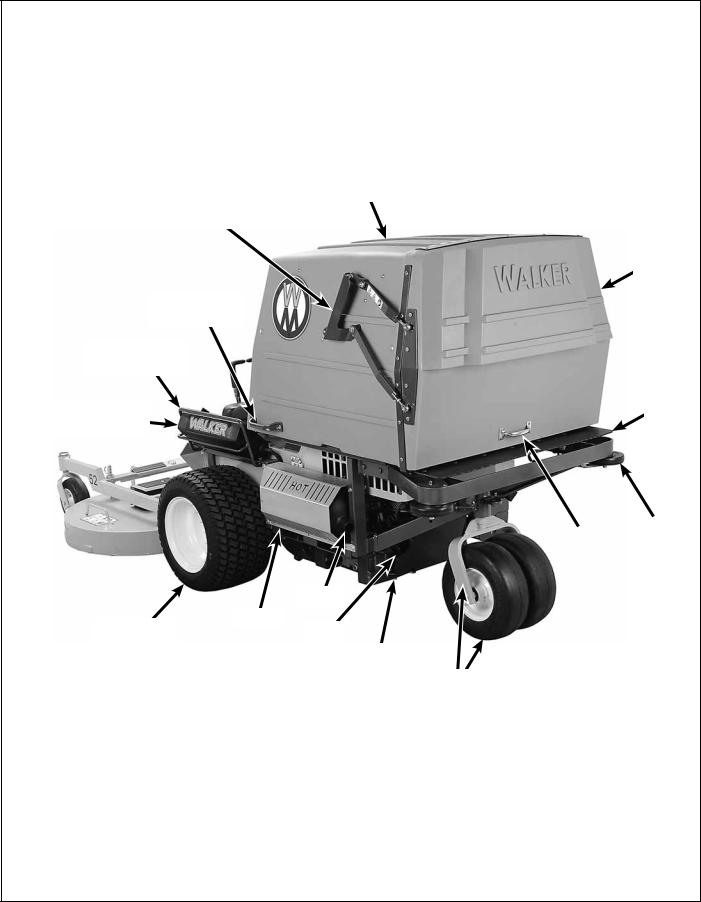
ComponentIdentification
Catcher Door
Gas Spring
Catcher Lift /
Dump Handle
Instrument Panel
Guard
Instrument Panel Box
(Shock Mounted)
Muffler
Left Hand
Drive Wheel
Removable Grass
Catcher Screen
(Not Visible)
Catcher
Door
Dump
Plate
Catcher |
|
Anti-Scuff |
Door Handle |
|
Roller |
|
|
|
Tailpipe
Oil
Filter Oil Drain
Plug
Tailwheel Fork
and Wheels
Rear View and Left Side View
7
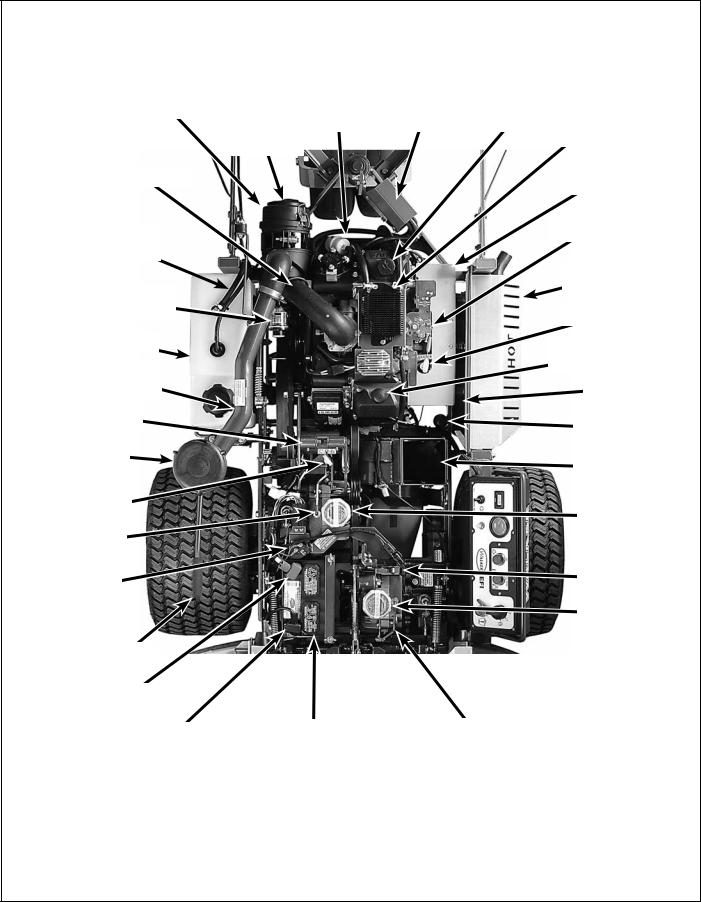
ComponentIdentification
Donaldson Air Cleaner |
|
Fuel |
Fuel Module |
Oil Fill |
Air Cleaner |
Filter |
(Not Visible) |
||
|
|
Oil Cooler |
||
|
Cover |
|
|
|
|
|
|
|
|
Air Intake Hose |
|
|
|
Muffler Grass |
|
|
|
Shield |
|
|
|
|
|
|
|
|
|
|
Throttle and |
Fuel Pickup |
|
|
|
Choke Linkage |
Line |
|
|
|
|
|
|
|
|
Muffler Heat |
Air Filter |
|
|
|
Shield |
|
|
|
|
|
Restriction Gauge |
|
|
|
Oil Dipstick |
|
|
|
|
|
Fuel Tank |
|
|
|
Rubber Bumper |
Precleaner |
|
|
|
(Catcher Support) |
|
|
|
|
|
Tube |
|
|
|
Muffler |
Jackshaft |
|
|
|
Rubber Bumper |
Turbine |
|
|
|
(Body Support) |
|
|
|
|
|
Precleaner |
|
|
|
GHS Blower |
|
|
|
|
|
PTO Gearbox |
|
|
|
|
Dipstick |
|
|
|
RH Hydrostatic |
RH Transmission |
|
|
|
Transmission |
|
|
|
|
|
Lockout Lever |
|
|
|
Neutral Safety |
|
|
|
|
|
30 Amp |
|
|
|
Switch |
Circuit Breaker |
|
|
|
LH Hydrostatic |
|
|
|
|
|
|
|
|
|
Transmission |
PTO |
|
|
|
|
Clutch Lever |
|
|
|
|
Positive (+) |
|
|
|
|
Battery Cable |
|
|
|
|
Negative (-) |
Battery |
LH Transmission |
||
Battery Cable |
|
|
Lockout Lever |
|
|
|
|
|
|
|
Top View (Engine Compartment) |
|
||
8
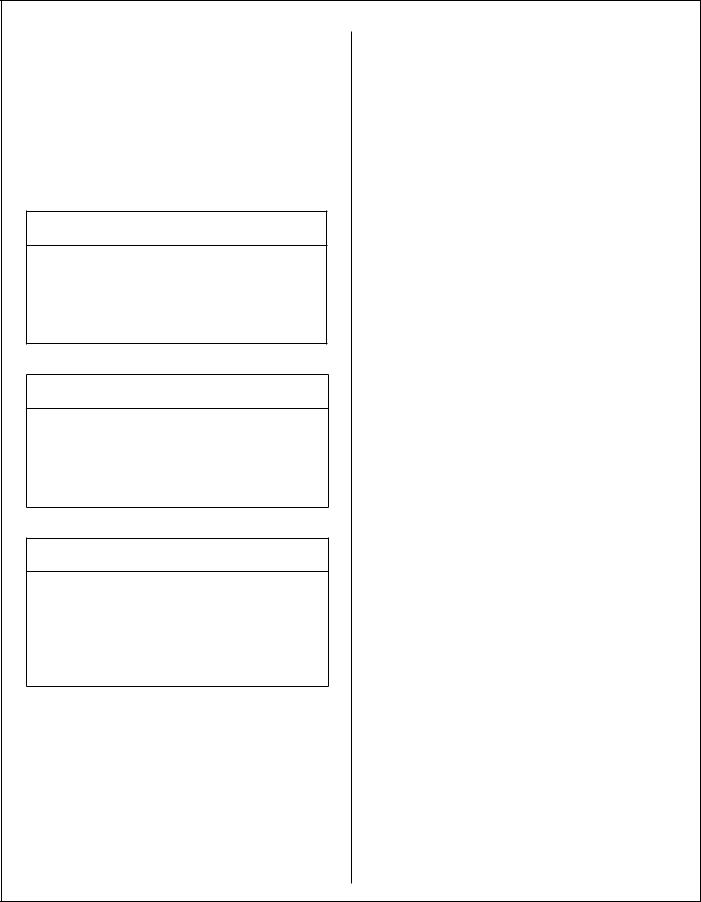
Safety Instructions - Before Operating
Pay particular attention to any information labeled
DANGER, WARNING, CAUTION, IMPORTANT, and NOTE in this manual.
When you see the Safety Alert Symbol (  ), read, understand, and follow the instructions. Failure to comply with safety instructions may result in personal injury.
), read, understand, and follow the instructions. Failure to comply with safety instructions may result in personal injury.
The seriousness or degree of importance of each type of information is defined as follows:
 DANGER
DANGER
An IMMEDIATE hazard that WILL result in severe personal injury or DEATH, if warning is ignored and proper safety precautions are not taken.
 WARNING
WARNING
A POTENTIAL hazard that COULD result in severe personal injury or DEATH, if warning is ignored and proper safety precautions are not taken.
 CAUTION
CAUTION
Possible hazards or unsafe practices that MAY result in MODERATE personal injury or property damage, or machine damage, if warning is ignored and proper safety precautions are not taken.
IMPORTANT: Identifies mechanical information demanding special attention, since it deals with the possibility of damaging a part or parts of the machine.
NOTE: Identifies information worthy of special attention.
Walker Manufacturing cannot predict every potentially dangerous situation. Therefore, items labeled as such in this manual do not cover all conceivable situations. Any person using procedures, tools, or control techniques not recommended by Walker Manufacturing must take full responsibility for safety.
The Walker Rider Lawnmower has been designed with many safety features to protect the operator from personal harm or injury. However, it is necessary for the operator to use safe operating procedures at all times. Failure to follow safety instructions contained in this manual may result in personal injury or damage to equipment or property.
If you have any questions concerning setup, operation, maintenance, or safety, please contact your authorized Walker Mower dealer or call Walker Manufacturing Company at (970) 221-5614.
BEFORE OPERATING
1.Read and understand the contents of this Operator’s Manual before starting and operating the machine. Become thoroughly familiar with all machine controls and how to stop the machine and disengage the controls quickly. Replacement Operator’s Manuals are available by sending the Model and Serial Number to:
Walker Manufacturing Company
5925 East Harmony Road
Fort Collins, CO 80528
2.Never allow children to operate rider mower.
Do not allow adults to operate without proper instruction.
3.Clear the area to be mowed of any foreign objects which may be picked up and thrown by cutter blades. Pick up all sticks, stones, wire, and any other debris.
4.Keep everyone, especially children and pets, a safe distance away from the area being mowed.
Do not mow with bystanders in the area.
5.Do not operate the machine barefoot or wearing sandals, sneakers, tennis shoes, or similar lightweight footwear. Wear substantial protective footwear.
9
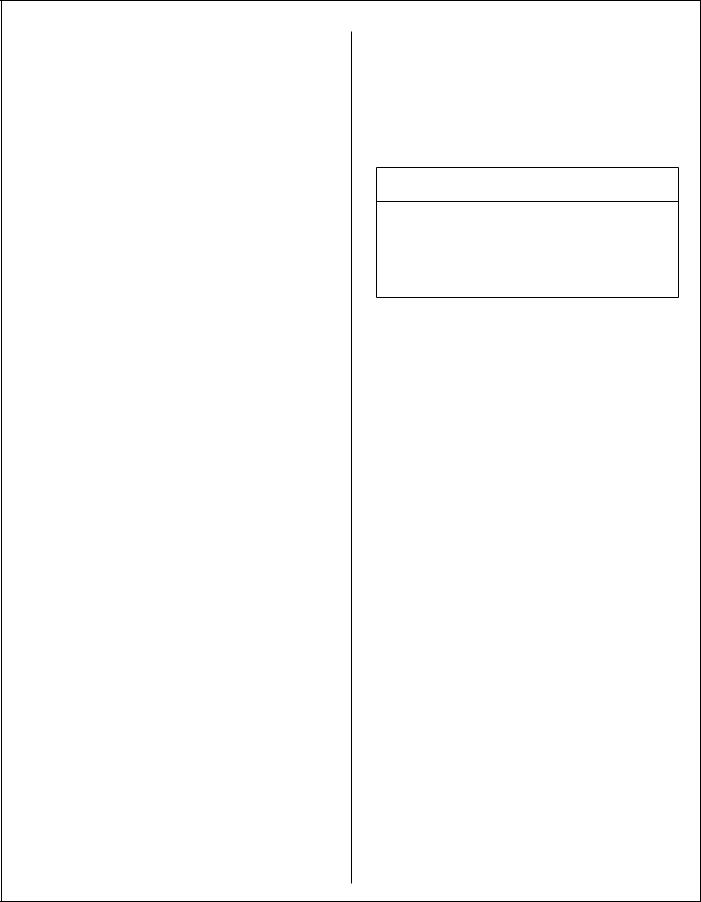
Safety Instructions - Before Operating
6.Do not wear loose fitting clothing that could get caught in moving parts. Do not operate this machine while wearing shorts; always wear adequate protective clothing, including long pants. Wearing safety glasses, safety shoes, and a helmet is advisable and required by some local ordinances and insurance regulations.
7.Prolonged exposure to loud noise can cause impairment or loss of hearing. Operator hearing protection is recommended; particularly for continuous operation of the GHS Model due to blower noise level. Wear a suitable hearing protective device, such as earmuffs or earplugs.
8.Keep all protective shields and safety devices in place. If a protective shield, safety device, or decal is damaged, unusable, or missing, repair or replace it before operating the machine.
9.Be sure interlock switches are functioning correctly, so the engine cannot be started unless the Forward Speed Control lever is in the NEUTRAL-PARK position, and the PTO clutch is in the DISENGAGED position. Also, the engine should stop if the operator lifts off the seat with either the Forward Speed Control (FSC) out of the NEUTRAL-PARK position or the PTO clutch in the ENGAGED position.
NOTE: There is a 1/2 second time delay function on the seat switch to avoid engine power interruption when driving over bumps.
10.Handle gasoline with care. Gasoline is highly flammable and its vapors are explosive:
a.Use an approved fuel container.
b.Never add fuel to a running engine or hot engine (allow hot engine to cool several minutes).
c.Keep matches, cigarettes, cigars, pipes, open flames, or sparks away from the fuel tank and fuel container.
d.Alwaysfillthefueltankoutdoorsusing care.
Fill to about one inch from the top of the tank. Use a funnel or spout to prevent spilling.
e.Replace the machine fuel cap and container cap securely and clean up any spilled fuel before starting the engine.
11.Never attempt to make any adjustments while the engine is running, except where specifically instructed to do so.
12.The electrical system battery contains sulfuric acid. Avoid any contact with skin, eyes, and clothing. Keep the battery and acid out of reach of children.
 WARNING
WARNING
The engine exhaust from this product contains chemicals known to the State of California to cause cancer, birth defects or other reproductive harm.
10

Safety Instructions - Operating
1.Operate the mower only in daylight or in good artificial light with good visibility of the area being mowed.
2.Sit on the seat when starting the engine and operating the machine. Keep feet on the deck footrests at all times when the tractor is moving and/or mower blades are operating. Never operate the tractor without a deck or imple ment installed.
3.For a beginning operator, learn to steer (maneuver) the tractor with a slow engine speed before attempting any mowing operation.
Be aware that, with the front mounted mower configuration, the back of the tractor swings to the outside during turns.
 DANGER
DANGER
Do not mow around overhanging tree branches or bushes at the same height as the operator’s torso and head where inadvertent contact may cause injury.
4.Remember, for an emergency stop, the forward motion of the tractor can always be stopped by pulling the Forward Speed Control (FSC) into the NEUTRAL-PARK position.
5.In case the transmission drive belt breaks during operation, and if the machine is on a slope, the machine will freewheel down the slope. To maintain control, immediately (1) Release the steering levers and simultaneously (2) Move the FSC to the NEUTRAL-PARK position. When the machine is stopped or moving slowly, engage the parking brake.
NOTE: The emergency stop procedure is exactly the same procedure as used to normally stop and park this machine.
6.Disengage the blade clutch and put the FSC in the NEUTRAL-PARK position before starting the engine (an ignition interlock switch normally prevents starting of the machine if these controls are in the OPERATING position).
7.Do not operate machine if the operator presence safety switch system is not working.
Verify proper operation by having the operator lift off the seat with the engine running and moving two controls, one at a time; (1) Move the FSC lever out of the NEUTRAL-PARK position, and (2) Engage the PTO Clutch. Moving either control should stop the engine after a 1/2 second delay.
8.Do not run the engine in a confined area without adequate ventilation. Exhaust fumes are hazardous and can be deadly.
9.Do not carry passengers - maximum seating capacity is one (1) person.
10.Watch for holes, rocks, and roots in the terrain and for other hidden hazards. When mowing tall grass, mow higher than desired to expose any hidden obstacles. Then, clean the area and mow to the desired height.
11.Avoid sudden starts or stops. Before backing the machine up, look to the rear to be sure no one is behind the machine. Watch carefully for traffic when crossing or working near roadways.
12.When moving forward, do not suddenly put the tractor in reverse by rapidly pulling on the steering levers, especially when going downhill, as this can lift the tractor tail wheel off the ground and set up a bucking motion due to operator overcontrol. If bucking does occur, immediately stop the bucking action by pulling the Forward Speed Control (FSC) lever into the NEUTRALPARK position.
13.Disengage the blade drive when transporting the machine across drives, sidewalks, etc. Never raise the mower deck while blades are rotating.
 DANGER
DANGER
Do not mow or dump grass within 5 feet (1.5 meters) of an embankment or retaining wall with drop off.
11
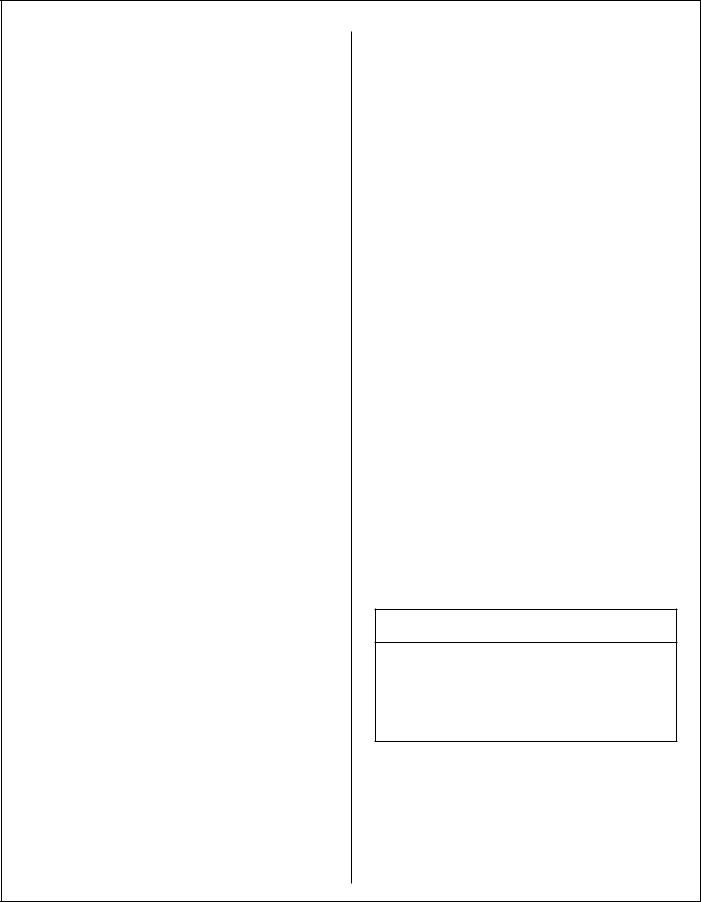
Safety Instructions - Operating
14.The maximum recommended slope operating angle is 15 degrees or 26% grade. When operating the machine on a slope, reduce speed and use caution to start, stop, and maneuver. To prevent tipping or loss of control of the machine, avoid sharp turns or sudden changes in direction. Do not operate the machine on a slope greater than 15 degrees.
15.Never adjust cutting height with the engine running. Before adjusting cutting height or servicing, disengage the blade clutch (PTO), stop the engine, and remove the ignition key. Wait for all movement to stop before getting off the seat.
NOTE: A blade/blower brake should normally stop drive line rotation within five (5) seconds of disengaging the PTO clutch.
16.For side discharge mower decks, do not operate with the grass deflector shield removed.
Keep the deflector in the lowest possible position.
17.When using the tilt-up deck, observe the following recommendations:
a.Do not move tractor with deck in tilt-up position.
b.Never tilt body forward with deck in tilt-up position.
18.For GHS equipped models, do not operate the machine with the grass catcher in the DUMP position or with the back door OPEN. Dangerous projectiles may be thrown out of the discharge chute or the back of the grass catcher.
19.For GHS equipped models, use care when closing the grass catcher door. Keep fingers and hands away from the hinge and pinch points when the door is being closed. Also, keep fingers and hands clear of the door frame.
The door may slam shut with considerable force.
20.In case of a clogged or plugged mower deck or GHS catching system:
a.Disengage the blade clutch (PTO) and turn the engine off before leaving the seat.
b.LOOK to make sure blade drive shaft and blower drive pulley movement has stopped before trying to unclog the system.
c.Disconnect the spark plug wires.
d.Never place hands under the deck or in the GHS blower - use a stick or similar tool to remove clogged material.
21.If the cutting blades strike a solid object or the machine begins to vibrate abnormally, immediately disengage the blade clutch (PTO), stop the engine, and wait for all moving parts to stop. To prevent accidental starting, disconnect the spark plug wires. Thoroughly inspect the mower and repair any damage before restarting the engine and operating the mower. Make
sure cutter blades are in good condition and blade nuts are torqued to 60 lb·ft (81 N·m) for
gear driven decks, and blade bolts torqued to 70 lb·ft (90 N·m) for belt driven decks.
22.Do not touch the engine or muffler while the engine is running or immediately after stop ping the engine. These areas may be hot enough to cause serious burns.
23.When leaving the machine unattended, disen gage the blade clutch (PTO), stop the engine, and remove the key.
 CAUTION
CAUTION
Use leg muscles and firm footing when lifting the catcher to dump; avoid bending at the waist and using back muscles in order to prevent back injury.
12

Safety Instructions - Maintenance
1.To prevent accidental starting of the engine when servicing or adjusting the machine, remove the key from the ignition switch and disconnect the spark plug wires.
2.To reduce fire hazards, keep the engine free of grass, leaves, excessive grease, and dirt.
3.Keep all nuts, bolts, and screws tight to ensure the machine is in a safe, working condition. Check the blade mounting nuts frequently, mak ing sure they are tight.
4.Perform only maintenance instructions described in this manual. Unauthorized maintenance operations or machine modifications may result in unsafe operating conditions.
5.If the engine must be running to perform a main tenance adjustment, keep hands, feet, and clothing away from moving parts. Do not wear jewelry or loose clothing.
6.Always use the proper engine service manual when working on the engine.
Unauthorized maintenance operations or modifications to the engine may result in unsafe operating conditions.
7.Altering the equipment or engine in any manner which adversely affects its operation, perfor mance, durability, or use will VOID the warranty and may cause hazardous conditions.
8.Never attempt to disconnect any safety devices or defeat the purpose of these safety devices.
9.Do not change the engine governor settings or overspeed the engine. The governor has been factory-set for maximum-safe engine operating speed.
10.Use genuine factory replacement parts.
Substitute parts may result in product malfunction and possible injury to the operator and/or others.
11.Use care when charging the battery or per forming maintenance on the battery and electrical system:
a.Make sure the battery charger is unplugged before connecting or disconnecting cables to the battery.
b.Charge the battery in a well-ventilated space, so gases produced while charging can dissipate. Make sure the battery vents in the caps are open.
c.Keep sparks, flames, and smoking materi als away from the battery at all times. To avoid sparks, use care when removing bat tery cables from posts.
d.Disconnect both battery cables before unplugging any wiring connectors or making repairs on the electrical system.
IMPORTANT: Keep all applicable manuals immediately accessible to anyone who may operate or service this machine.
13
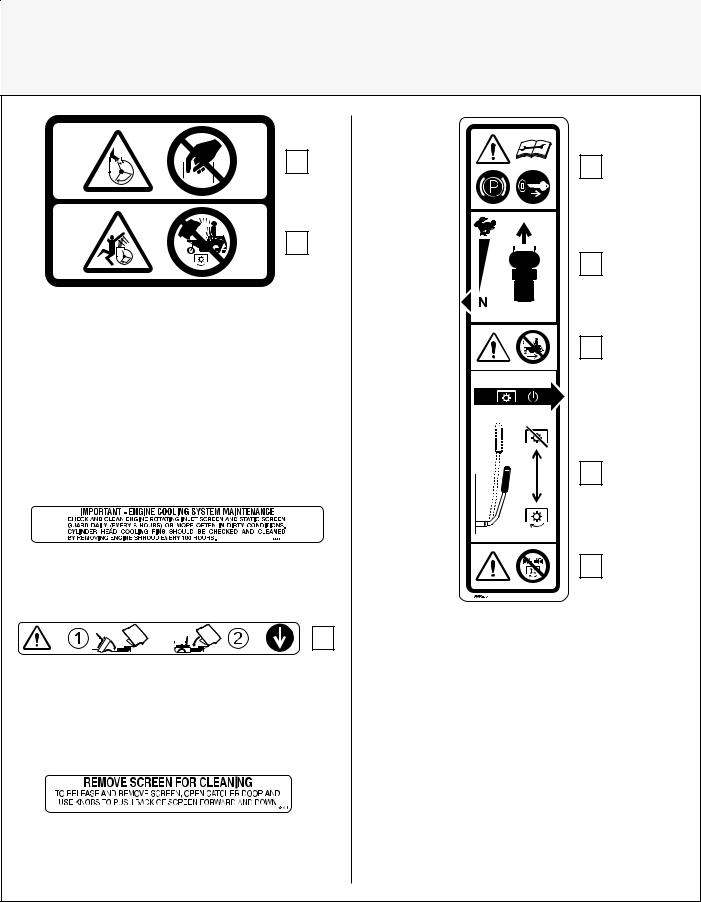
Safety Instructions
SAFETY, CONTROL, AND INSTRUCTION DECALS
Safety, Control, and Instruction Decals are installed on the machine;
if any are missing, illegible, or damaged, a replacement should be ordered and installed before putting the machine into operation. The Decal Part Number is listed below and in the Parts Manual.
1.
2.
8600-4
Location: Adjacent to Blower Discharge Chute through Body
Part Number: 8600-4
1.Warning - rotating impeller is a cutting/dismemberment hazard to fingers and hands.
•Never reach down into the blower discharge chute.
2.Warning - thrown object hazard
•Never engage the PTO with grass catcher raised.
Location: Engine Shroud
Part Number: 5855
1.
8600-16
Location: Rear Cross Member of Front Body
Part Number: 8600-16
1.Important - Lower front body before lowering catcher box.
Location: Rear of Grass Catcher Exhaust Screen
Part Number: 5869
1.
2.
3.
4.
5.
Location: RH Fender
Part Number: 8600-33
1.Warning –read Operator’sManual before servicing or performing maintenance.
•Engage parking brake.
•Remove ignition key.
2.Forward Speed Control
•Move lever forward to increase speed; back to stop.
3.Warning – do not operate the machine without a deck or other implement attached.
4.PTO Clutch Lever
•Move lever forward to disengage PTO clutch; back to engage.
5.Warning – do not engage PTO clutch with PTO shaft disconnected.
14
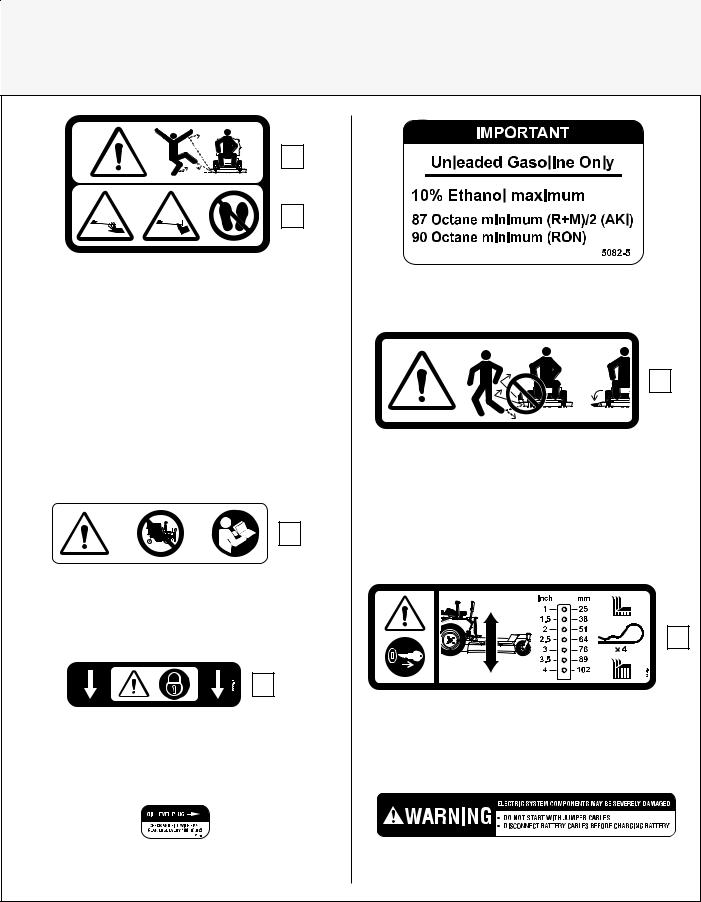
Safety Instructions
SAFETY, CONTROL, AND INSTRUCTION DECALS
Safety, Control, and Instruction Decals are installed on the machine;
if any are missing, illegible, or damaged, a replacement should be ordered and installed before putting the machine into operation. The Decal Part Number is listed below and in the Parts Manual.
1.
2.
Location: Each End of Mower Deck
Part Number: 8600-28
1.Warning – thrown object hazard.
•Keep bystanders away from the machine when operating.
•Clear lawn of debris before operating.
•Keep any discharge deflector in place and in the lowest position.
2.Warning – rotating mower blades are a cutting/ dismemberment hazard to hands and feet.
•Keep all body parts away from rotating mower blades.
•Do not step on end of deck.
1.
8600-14
Location: Deck Carrier Frame
Part Number: 8600-14
1.Warning – do not operate the machine with the deck tilted up.
1.
Location: Deck Carrier Frame
Part Number: 8600-15
1.Warning – lock deck tilt-up hinge before operating the machine.
Location: Gear Axle
Part Number: 5810-1
Location: Precleaner Tube
Part Number: 5082-5
1.
5848-2
Location: Deck Discharge Shield
(SD Decks Only)
Part Number: 5848-2
1.Warning – thrown object hazard
•Always keep the discharge shield in the lowest position when operating.
•Do not remove the discharge shield.
1.
Location: Deck Gearbox Cover
Part Number: 8600-7
1.Warning - stop engine and remove ignition key before adjusting deck cutting height.
Location: Battery Hold-Down Bar
Part Number: 5844-2
15

Safety Instructions
SAFETY, CONTROL, AND INSTRUCTION DECALS
Safety, Control, and Instruction Decals are installed on the machine;
if any are missing, illegible, or damaged, a replacement should be ordered and installed before putting the machine into operation. The Decal Part Number is listed below and in the Parts Manual.
1.
2.
8600-23
Location: Right Side, Behind Operator Seat
Part Number: 8600-23
1.Warning - entanglement hazard.
•Remove ignition key before raising front body.
2.Body Tilt Latch
•Raise lever to release.
•Lift at back of body to raise.
1.
Location: Catcher Door Hinge Bar,
LH and RH Sides
Part Number: 8600-10
1.Caution - Pinch point
• Keep all body parts clear when closing grass catcher door.
Location: Bridge Assembly and
LH Gear Axle
Part Number: 5810-3
Location: Hydrostat Oil Reservoir
Location: Jackshaft Support Adjacent
to Dipstick
Part Number: 7827
1.
Location: Front Body, RH Side Adjacent to Operator Seat
Part Number: 8600-30
1.Parking brake
Move lever forward to engage Parking Brake; back to disengage.
1.
Location: Front Body, LH Side Adjacent to Operator Seat
Part Number: 8600-31
1.Throttle
16

Safety Instructions
SAFETY, CONTROL, AND INSTRUCTION DECALS
Safety, Control, and Instruction Decals are installed on the machine;
if any are missing, illegible, or damaged, a replacement should be ordered and installed before putting the machine into operation. The Decal Part Number is listed below and in the Parts Manual.
2.
1. |
3. |
4.
Location: Front Body Adjacent to RH Steering Lever
Part Number: 8600-34
1.Warning – read Operator’s Manual before operating the machine.
Warning – wear eye and ear protection when operating the machine.
2.Warning – roll-over hazard
•Do not operate on slopes greater than 15 degrees.
3.Warning – thrown object hazard.
•Keep bystanders away from the machine when operating.
4.Warning – entanglement hazard.
•Keep all guards in place while engine is running.
60 lb·ft (81 N·m)
1.
8600-9
Location: Gearbox Cover
(Gear Drive Decks Only)
Part Number: 8600-9
1.Tighten blade nuts on gear driven decks to 60 lb·ft (81 N·m).
1.
8600-12
Location: Front Body, LH SideAbove Muffler
Part Number: 8600-12
1.Warning – carbon monoxide (CO) poisoning hazard.
•CO emitted by a running engine can be deadly.
•Do not operate indoors or in other enclosed areas.
Location: Instrument Panel
Part Number: 8823-6
17
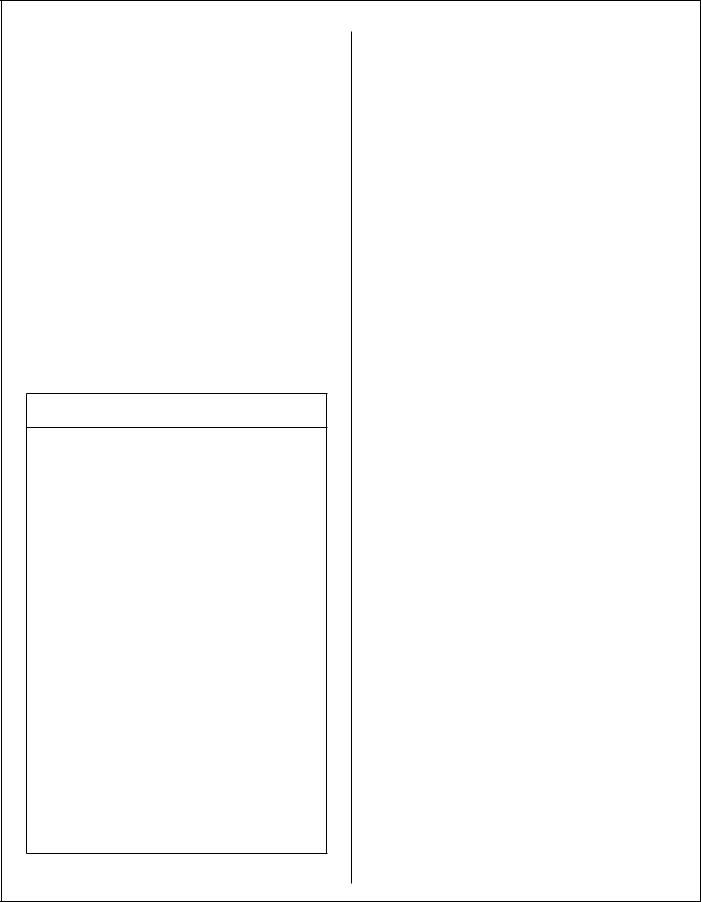
Assembly Instructions
SETUP INSTRUCTIONS
Walker Mowers are shipped partially assembled to our distribution network, and are typically assembled by the selling dealer. For any additional assembly besides the following, contact your Walker dealer.
Tire Installation (Tractor)
• Install the drive tires using the eight (8) lug bolts that are supplied with the owner’s packet of materials. Bolts are torqued to 75 to 85 lb·ft (102 to 115 N·m). Drive tires are 18 x 9.50-8, 4-ply; rear tires are 13 x 5.00-6, 4-ply.
• Check and adjust the inflation of the tires. The tire inflation recommendations are:
Drive |
= |
15 PSI (103 kPa) |
Rear |
= |
20 PSI (137 kPa) |
Battery Service
 CAUTION
CAUTION
Important Battery Service, Installation, and
Changing Tips:
•Do not allow the battery cables to touch opposing terminals. When connecting battery cables attach the positive (+) cable to positive (+) battery terminal first, followed by negative (-) cable to negative (-) battery terminal.
•Never start the engine when the cables are loose or poorly connected to the battery terminals.
•Never disconnect battery while engine is running.
•Never use a quick battery charger to start the engine.
•Never “jump start” the engine using another source. Electricity fluctuations can damage the ECU (Electronic Control Unit).
•Always disconnect negative (-) battery cable lead before charging battery, and also unplug harness from ECU before performing any welding on equipment.
Raise front mower body up for battery access (refer to Front Body Latch Release in Operating Instruc tions). Check the battery for electrolyte level and charge. The electrolyte level should be at the bottom of the vent wells [1/4 to 1/2 in. (6 to 13 mm) above plates]. If the specific gravity is less than
1.225, the battery needs charging. If the battery has been shipped dry, or is wet but needs service, refer to the following instructions.
IMPORTANT: Make sure battery is securely mounted in the frame. A loose battery may cause damage to the case resulting in acid leakage and severe damage to the machine. A hazard may be created by damage to critical working parts and safety systems.
Wet Battery Service
If the battery has been shipped wet, but the electrolyte level is low or the battery needs to be charged then:
1.Fill each battery cell with distilled water to the bottom of the vent wells.
2.Charge battery. Refer to Battery Charging in this section.
18
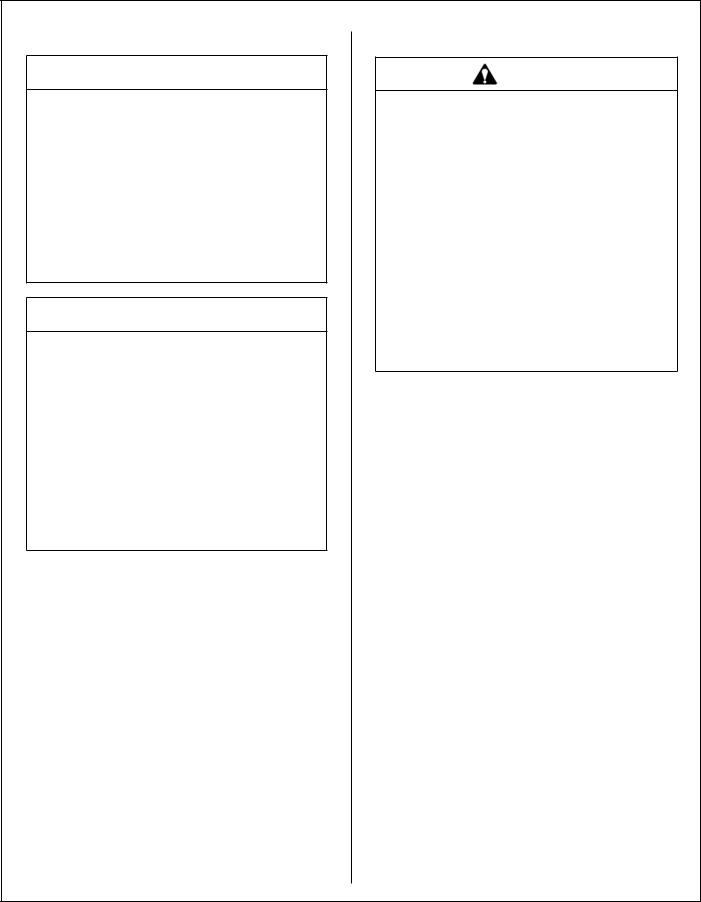
Assembly Instructions
Dry Battery Service
 DANGER
DANGER
Activating a battery can be dangerous. The battery should be taken to a reliable service station, battery store, or power equipment dealer where a trained technician can activate the battery safely. DO NOT attempt to activate the battery unless you are experienced in battery service work. The following activation and charging instructions are provided for use by a trained battery technician.
 DANGER
DANGER
Battery electrolyte is a poisonous and corrosive sulfuric acid solution.
•Avoid spillage and contact with skin, eyes, and clothing - causes severe burns.
•To prevent accidents, wear safety goggles and rubber gloves when working with electrolyte.
•Neutralize acid spills with baking soda and water solution.
To fill (activate) battery with electrolyte (if battery has been shipped dry):
1.Remove the battery hold-down bar, disconnect the battery cables and lift the battery out of the tray.
IMPORTANT: Battery must be removed from the mower before filling with electrolyte.
IMPORTANT: Obtain and use only battery grade sulfuric acid electrolyte with a 1.265 specific gravity to activate the battery. DO NOT use water or any other liquid during initial activation.
2.Remove the filler caps and carefully fill each cell until the electrolyte is just above the plates.
3.After the battery is filled with electrolyte, replace the filler caps and charge the battery. Refer to
Battery Charging.
Battery Charging
DANGER
BATTERIES PRODUCE EXPLOSIVE GASES
•Charge the battery in a well-ventilated area, so that gases produced while charging can dissipate.
•Keep sparks, flames, and smoking materials away from the battery at all times.
•Make sure the battery cap vents are open after the battery is filled with acid (check manifold vent on each cap).
•Make sure the battery charger is unplugged before connecting or disconnecting cables to the battery.
IMPORTANT: Always disconnect the negative (-) battery terminal before charging. Failure to do so can result in damage to the ECU.
1.Charge the battery at 15 amps for 10 minutes. DO NOT exceed 20 amps maximum recommended charging rate. Charge until specific gravity is at least 1.250. Total charging time should not exceed one (1) hour.
2.After charging the battery, adjust the electrolyte level to the bottom of the vent wells [1/4 to 1/2 in.
(6 to 13 mm) above the plates].
IMPORTANT: DO NOT overfill the battery. Electrolytewilloverflowthroughtheventedcaps onto parts of the machine and WILL result in severe corrosion.
3.Install battery.
19
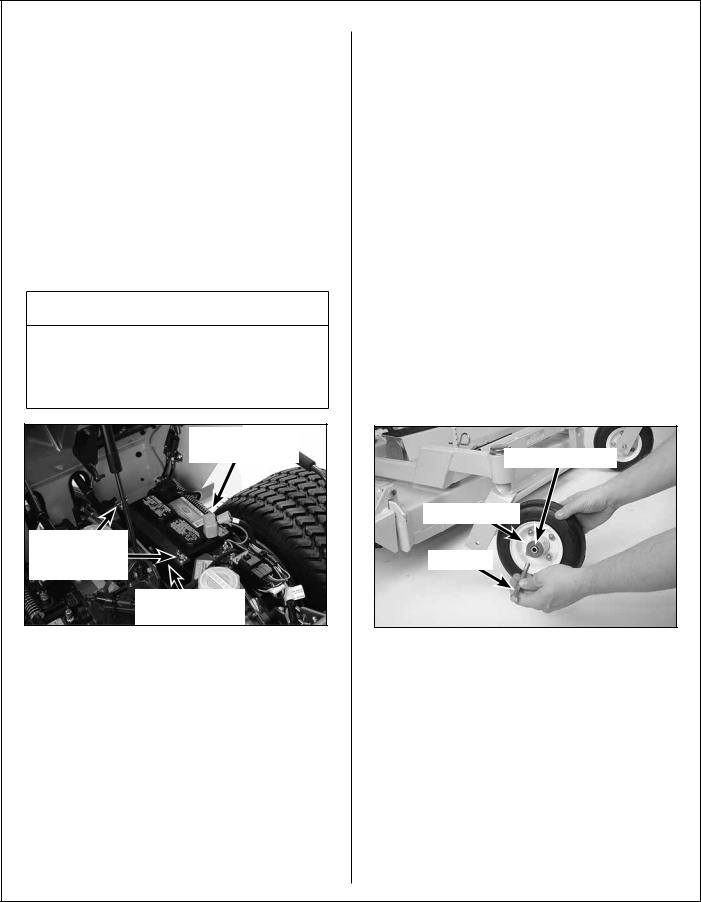
Assembly Instructions
Battery Installation
IMPORTANT: Make sure battery is securely mounted in the frame. A loose battery may cause damage to the case resulting in acid leakage and severe damage to the machine. A hazard may be created by damage to critical working parts and safety systems.
Install the battery in the mower as shown in Battery Installation photo. Connect the positive (+) first and then the negative (-) cable to the proper battery terminal [red cable and boot connects to the Positive (+) terminal]. Slide the rubber boot up and over the battery post, making sure it covers the post completely to prevent an electrical short.
 WARNING
WARNING
Make sure the battery cap vents are open. Improper venting of the battery COULD cause a battery explosion.
(+) Battery Cable
Connection
Battery Clamp
Secured by
Wing Nut(s)
Battery Protector
Plate in Place
Battery Installation
Mower Deck Assembly
Deck Caster Wheels Installation
1.Remove the bolt, nut, axle spacer tube, and spacer washers from each deck caster wheel fork.
NOTE: Spacer washers are used only when the optional foamed rubber deck wheels (8 x 3.00) are installed.
2.Fit the axle spacer tube through the wheel hub, position the spacer washer on each side of the hub (if used), and fit the assembly into the wheel fork.
3.Insert the 3/8-16 x 4-1/2 in. bolt through the wheel fork with the bolt head to the outside and install the 3/8-16 in. Keps nut.
4.Tighten the bolt and nut until the axle spacer tube bottoms against the inside of the wheel fork (will not turn) while the wheel and spacer washers (if used) spin freely without binding.
Axle Spacer Tube
Spacer Washer
Axle Bolt
Deck Caster Wheel Installation
5.Grease the caster wheel bearings and caster pivot bearings - one grease fitting for each wheel and each pivot.
20
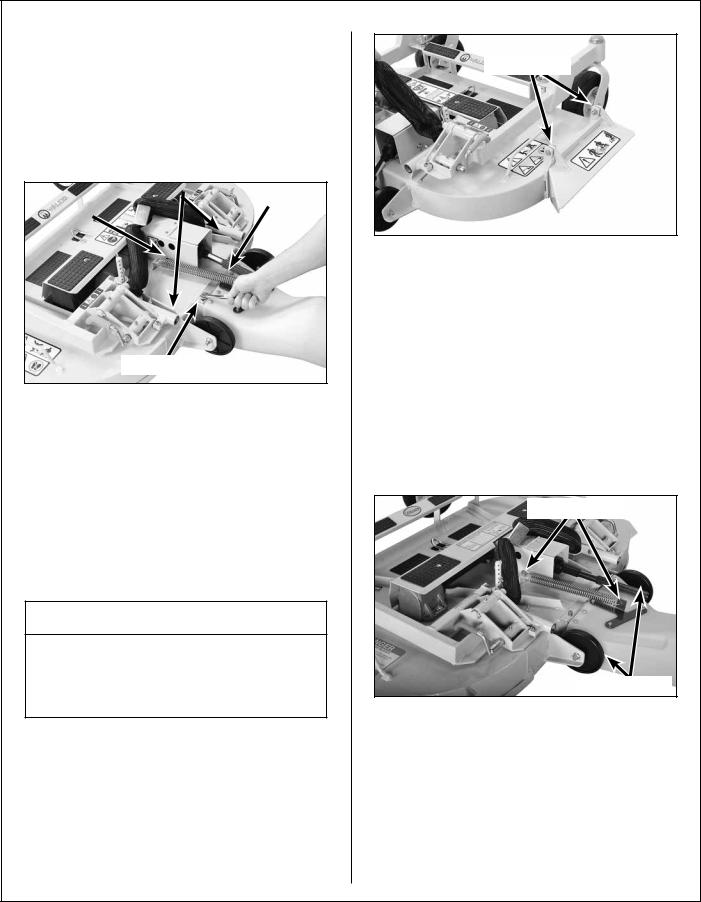
Assembly Instructions
Deck Discharge Chute Installation
(GHS Rear Discharge Models Only)
Mount the discharge chute hinge on top of the deck discharge opening using the 1/4-20 x 1/2 in. socket button head screw and 1/4-20 ESNA nut. Position the screw with the head inside of the chute and the nut on the outside. Attach spring for tilt-up action from chute to bracket on deck.
|
Carrier Frame Tube Sockets |
|
|
||
Attach |
|||||
|
|
|
|
||
Attach Guard |
|
|
|||
|
|
Chute |
|||
|
|
|
|
||
Nut on Top
Discharge Chute and PTO Shaft Guard Installation on Rear Discharge Deck
Deck Discharge Deflector Shield Installation
(Side Discharge Models Only)
Attach the side discharge deflector shield using two
(2) 3/8-16 x 1-1/4 in. bolts, 3/8-16 nylock insert locknuts, and 3/8 in. wave spring washers. The wave washers fit between the two hinging surfaces. Tighten the nuts until the shield moves freely but is not loose.
 WARNING
WARNING
DO NOT operate the machine without the grass deflector shield attached and in the lowest possible position.
Attach Shield
Discharge Shield Installation
on Side Discharge Deck
PTO Shaft Guard Installation
Position the shaft guard as shown and mount with two (2) 1/4-20 x 1/2 in. bolts.
Tilt-Up Roller Wheel Installation
Mount the two (2) tilt-up roller wheels on the brackets on the rear skirt of the deck housing using the P/N 8490 axle bolt, 3/8 in. wave spring washer and 3/8-16 in. Whiz locknut. Tighten the axle bolt until the wheel rolls freely, but is not loose.
Attach Spring
Roller Wheels
Tilt-Up Spring and Roller Wheel
Installation on Rear Discharge Deck
21

Assembly Instructions
Mower Deck Installation on Tractor
Deck Installation
1.Lightly grease each deck support arm (2) on the tractor. Refer to Mower Deck Installation photo for location of deck support arm.
2.Engage the deck carrier frame tube sockets on the tractor support arms (refer to Discharge
Chute and PTO Shaft Guard Installation photo for socket location), slide the deck onto the support arms approximately 3 in. (76 mm).
3.Retract the spring-loaded quick disconnect ring on the PTO Coupler and insert the Coupler Installation Tool (provided in Owner’s Packet) as shown in the photo below.
NOTE: The Coupler Installation Tool is provided for convenience, but is not required for installation.
Coupler
Installation Tool
PTO Coupler
Tube Retract Spring-Loaded
Quick Disconnect Ring
PTO Coupler Installation Tool
4.Reaching under the tractor, slide the PTO coupler tube onto the deck drive shaft (align arrow decals), then install the coupler quick disconnect onto the tractor PTO drive shaft.
NOTE: When installing the DS52 or DS62 Mower deck, make sure to retract the dolly wheel after mounting the deck on the tractor.
Grease Deck
Support Arms
PTO Connection
Arrows on Shaft and Tube (Used to Align When Sliding Together)
Mower Deck Installation
(PTO Shaft Connection)
5.Remove Installation Tool from quick disconnect ring and make sure the ring has “snapped” securely on the spline shaft.
IMPORTANT: DO NOT operate tractor with Coupler Installation Tool installed.
IMPORTANT: To prevent damage to the mower, make sure the PTO quick disconnect is securely locked on the tractor, with the locking balls fully seated in the groove and the ring in the locked position (refer to the Quick Disconnect Ring “Locked” Position illustration). After installation, pull on the PTO coupler to check for
security. |
|
Coupler Ring in |
PTO Drive |
Released Position |
Shaft |
PTO Coupler |
|
U-Joint |
|
Quick Disconnect Ring “Released” Position
22

Assembly Instructions
Internal Balls |
PTO Drive |
|
Locked on Shaft |
Shaft |
|
PTO Coupler |
Coupler Ring in |
|
U-Joint |
Locked Position |
|
Quick Disconnect Ring “Locked” Position
6.Slide the deck the rest of the way on the deck arms. If the deck is rear discharge (GHS equipped model), the rear discharge chute will need to be aligned and connected to the blower inlet during the last 2 in. (51 mm) of slide action on the support arms.
NOTE: Raising the mower body may be helpful in fitting and guiding the deck chute into the blower.
7.Install the hitch pin through the hole on the end of each support arm to lock the deck in place (refer to Deck Counterweight Spring Installation photo). Two (2) hitch pins are included in the Owner’s Packet of materials.
8.Raise the mower body (instead of lifting the front of deck) and clip the counterweight springs to the receptacle on front of body. Lower the body to tension the springs. (Refer to Deck Counterweight Spring Installation photo.)
9.With the counterweight springs connected, the weight on the deck caster wheels should be 15 to 25 Ib (6.8 to 11.3 kg); this adjustment is preset at the factory. If required, the spring tension can be adjusted by tightening or loosening the elastic stop nuts located underneath the lower spring hook, or contact your local dealer if additional help is required. Refer to Deck Counterweight Spring Installation photo.
Spring Tension Adjustment
Nut Located Under Lower
Spring Hook (Not Visible)
Counterweight Springs |
|
Hitch Pins |
Clip Onto Body With |
|
Lock Deck On |
Forward Body Tilted Up |
|
Support Arms |
Deck Counterweight Spring Installation
23
